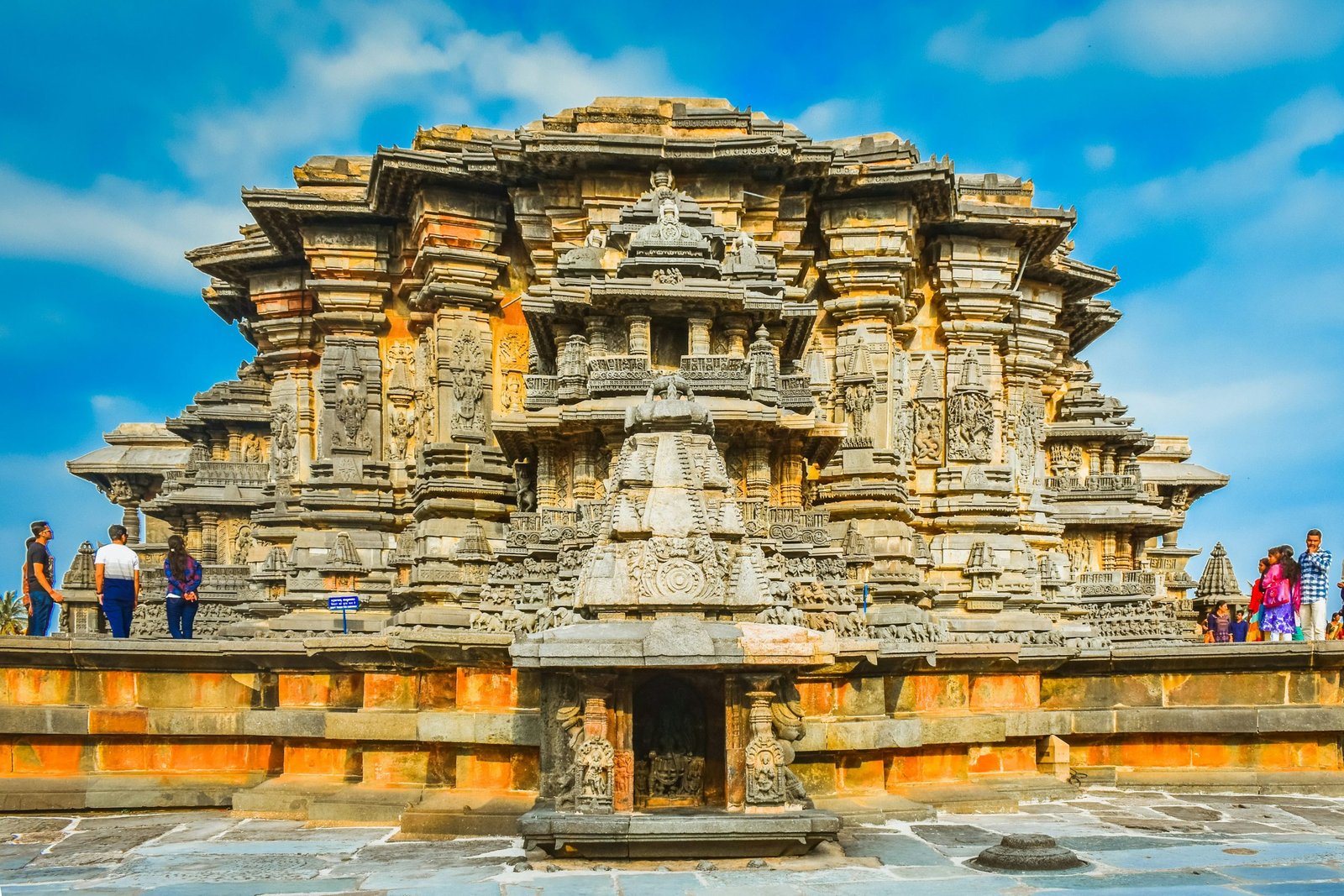
Chennakeshava Temple Intro
Nestled amidst the verdant landscapes of Belur, Karnataka, the Chennakeshava Temple stands as an epitome of architectural brilliance, historical significance, and spiritual sanctity. Dedicated to Lord Vishnu, this ancient temple, renowned for its exquisite carvings and intricate architecture, is a testament to the legacy of the Hoysala Empire. Let us embark on a journey to explore the rich history, captivating architecture, and cultural significance of this revered temple.
History and Architecture
Constructed in the 12th century under the patronage of King Vishnuvardhana of the Hoysala dynasty, the Chennakeshava Temple is a masterpiece of architectural finesse. It took over a century to complete this magnificent structure, showcasing the meticulous craftsmanship and artistic prowess of the artisans of that era. The temple exemplifies the quintessential Hoysala architectural style, characterized by its intricately carved sculptures, ornate pillars, and exquisite detailing.
Perched atop a raised platform, the temple boasts three intricately decorated entrances, each adorned with elaborate sculptures depicting mythological narratives, celestial beings, and divine motifs. The central sanctum houses the presiding deity, Lord Chennakeshava, an incarnation of Lord Vishnu, sculpted with unparalleled grace and devotion. Surrounding the main shrine are smaller sanctums dedicated to deities such as Kappe Chennigaraya, Andal, and Saumyanayaki, each exuding its unique charm and spiritual aura.
Geography and Nearby Attractions
Belur, the abode of the Chennakeshava Temple, is located in the picturesque Hassan district of Karnataka, along the banks of the tranquil Yagachi River. Enveloped by lush greenery and serene landscapes, Belur offers a serene retreat for nature lovers and history enthusiasts alike. Moreover, its proximity to several architectural marvels of the Hoysala dynasty makes it a hotspot for cultural exploration and heritage tourism.
Nearby, the Halebidu Temple, a mere 16 kilometers away, beckons with its grandeur and intricate sculptures, providing a glimpse into the architectural opulence of the Hoysalas. Additionally, the ancient city of Hassan, renowned for its historical monuments and natural splendor, offers further avenues for exploration and discovery, making Belur an ideal destination for an immersive cultural experience.
Best Time to Visit
The ideal time to visit the Chennakeshava Temple and its surroundings is during the winter season, spanning from October to February. During this time, the weather remains pleasant, creating a conducive environment for temple visits and outdoor excursions. However, it is advisable to avoid the monsoon season, from June to August, as heavy rainfall may disrupt travel plans and hinder exploration of the temple complex and its environs.
Local Cuisine and Accommodation
Belur, steeped in culinary heritage, offers a delectable array of local delicacies that tantalize the taste buds of visitors. From the crispy Maddur Vada to the aromatic Kesari Bath, the culinary delights of Karnataka are sure to leave a lasting impression on discerning palates. Moreover, traditional dishes such as Bisi Bele Bath and the iconic Mysore Pak offer a gastronomic journey through the flavors of the region, enriching the cultural experience of visitors.
In terms of accommodation, Belur caters to diverse preferences and budgets, with options ranging from budget-friendly guesthouses to luxurious resorts. Established accommodations such as The Green Pastures, The Riveredge, and The Chennakeshava Residency offer comfortable lodgings, warm hospitality, and convenient access to the temple complex and nearby attractions, ensuring a memorable stay for visitors.
Visitors and Significance
The Chennakeshava Temple serves as a magnet for visitors from across the globe, attracting devotees, history enthusiasts, and architecture aficionados alike. For devout Hindus, the temple holds immense spiritual significance, serving as a sacred pilgrimage site dedicated to Lord Vishnu. Its rich historical heritage and architectural splendor also capture the imagination of researchers and scholars, drawing them to unravel the mysteries and marvels of Hoysala craftsmanship.
Visiting the Chennakeshava Temple transcends mere religious observance; it offers a profound journey through time and space, allowing visitors to immerse themselves in the grandeur of ancient Indian architecture and heritage. As a testament to the rich cultural legacy of Karnataka, the temple stands as a beacon of spiritual enlightenment and architectural excellence, inspiring awe and admiration among all who behold its majestic beauty.
Conclusion
In conclusion, the Chennakeshava Temple in Belur stands as a timeless testament to the grandeur of the Hoysala dynasty and the spiritual majesty of Hinduism. With its awe-inspiring architecture, intricate carvings, and serene surroundings, the temple invites visitors on a transformative journey of cultural exploration and spiritual introspection. Whether as a devotee seeking divine blessings or an admirer of ancient art and architecture, a visit to the Chennakeshava Temple is sure to leave an indelible imprint on the soul, resonating with the echoes of a bygone era and the enduring legacy of Karnataka’s rich cultural heritage.






